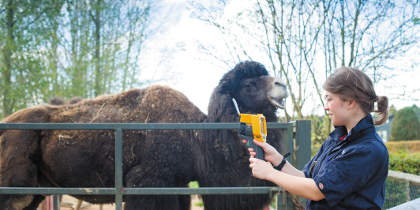
September 9, 2008, by Teaching at Nottingham
Linking theory to practice in an undergraduate veterinary curriculum using case-based teaching: students’ perspectives
Hany Elsheikha:
Background: “Case-based teaching (CBT) has been used extensively in medical and dental educational programs to develop critical thinking skills via a learner-centred approach. At the School of Veterinary Medicine and Science, University of Nottingham CBT was introduced as an ancillary teaching intervention to integrate clinically relevant material into the basic science component of the vertically integrated curriculum.
Objectives: “The objectives of this project were to (1) examine students’ attitude to, and opinions of CBT, as a learning approach in preparation for clinical work compared to other methods, and (2) establish if gender, year of study or prior exposure to CBT, were predictors of attitude.
Methods: “A Questionnaire-based survey was distributed to Students (n = 185) in the first year and second year of veterinary school in March 2008. With the School approval students were asked with their consent to reflect on their experience of CBT by completing an anonymous questionnaire. Student’s attitude was assessed by noting their degree of agreement with seven statements using a Likert-type scale. Ordinal logistic regression analysis was used to detect differences among respondents in relation to gender, year of study, and prior experience of CBT. Student reflections regarding CBT were also sought. Questions posed included student impressions of the most and least useful elements of CBT in their preparation for clinical practice, as well as how they considered improvements could be made.
Results and Discussion: “One-hundred and sixty two students (87.56%) completed the survey instrument. Findings indicate that CBT is highly valued amongst the students due to the team working, interactive nature of the sessions and longitudinal nature of the cases. The majority of students regarded CBT as directly relevant for clinical preparation as it helps them to integrate preclinical and clinical knowledge and skills in veterinary medicine. Also, students perceived that a CBT approach contributed to the development of critical reasoning skills. However, common identified challenges were peer-dominance, less cooperative facilitators and coping with the ambiguity of knowledge and reasoning. No significant differences were detected in attitude between students in any tested variables (p>0.05), perhaps due to the small sample size. However, the first year male students with prior exposure to CBT were found to predict negative attitude (p<0.006). Potential reasons for this will be discussed in the presentation.
Implications: “Findings in this study suggest that CBT can enhance veterinary student learning experience. To increase student satisfaction a collaborative effort is needed from academics, facilitators and students to provide support for struggling students. Assessment of the impact of CBT on educational outcomes and the extent of basic science knowledge retention for clinical reasoning in final year students is planned in future studies.
Paper presented at the University’s Thirteenth Learning & Teaching conference (September, 2008).
Dr Hany Elsheikha
Lecturer in Veterinary Parasitology
School of Veterinary Medicine & Science
This article was originally published as part of PESL’s Teaching at Nottingham collection.
No comments yet, fill out a comment to be the first

Leave a Reply